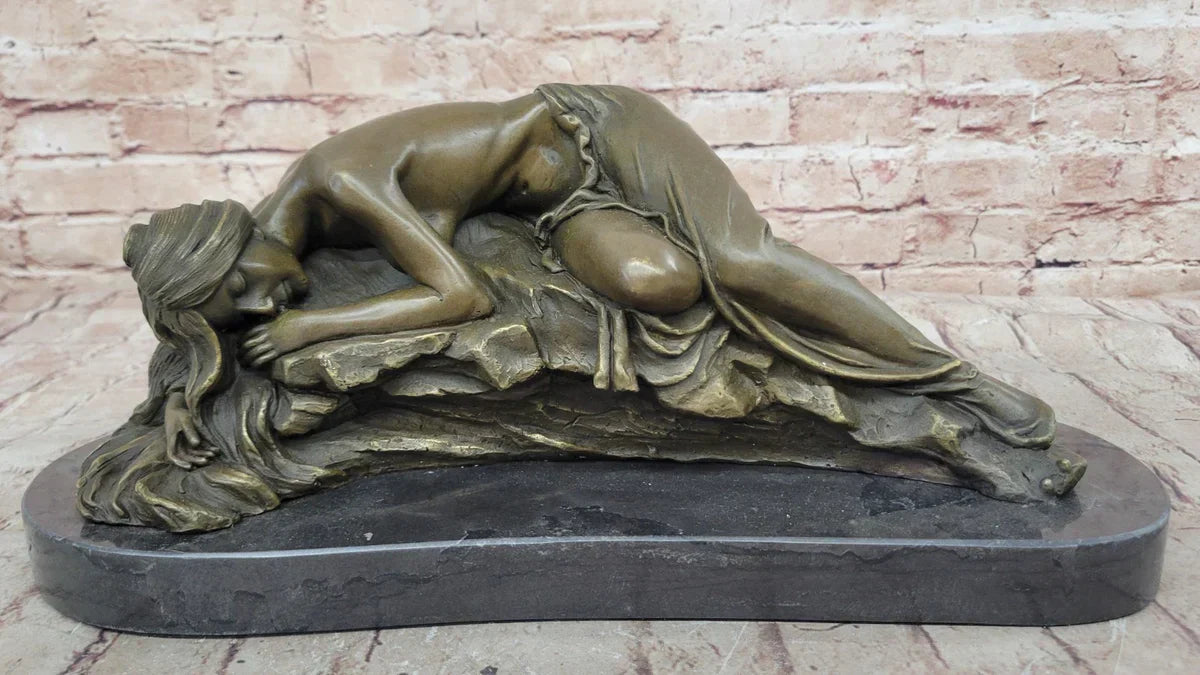In the history of art and design, two movements stand out for their bold aesthetics and sweeping influence: Art Nouveau vs. Art Deco. Though often confused due to their close historical proximity, these two styles are, in essence, strikingly different, each reflecting the spirit, technology, and social values of its time.
In this blog, we’ll take a deep dive into the origins, defining features, and legacies of Art Nouveau and Art Deco. By the end, you’ll be able to clearly distinguish the organic elegance of Art Nouveau from the geometric glamour of Art Deco and appreciate the unique charm each brings to art and design.
What is Art Nouveau?
Art Nouveau decor was all about bringing beauty into everyday life. It emerged in the late 19th century across Europe as a decorative arts movement, rebelling against the soulless mass production of the Industrial Age.
What is Art Deco?
Art Deco bronze sculpture, a shortened name for Arts Décoratifs, emerged in the 1920s, a period of economic boom and technological progress known as the “Roaring Twenties.” Unlike Art Nouveau, which looked to nature, Art Deco embraced technology, speed, and modern industry. It was a sleek, symmetrical, and often opulent style that celebrated the machine age.
Difference between Art Nouveau and Art Deco
Origins and Historical Context of Art Nouveau & Art Deco
Art Nouveau home decor emerged in the late 19th century (circa 1880-1914) primarily in Europe, especially England and Belgium. It was a reaction against the industrialization of the era and Victorian aesthetic, striving to bring art and craftsmanship back into everyday life through nature-inspired, hand-crafted designs.
Art Deco followed later, gaining prominence during the 1920s and 1930s, reflecting post-World War I modernism, technological progress, and optimism for the future. Originating in Paris but spreading globally, it embraced modern industrial materials and machine-age aesthetics.
Philosophical and Cultural Differences
Art Nouveau decor represents a romantic, nature-centric worldview, emphasizing craftsmanship and artistic freedom. It embodies fluidity, harmony, and organic growth.
In contrast, Art Deco embraces industrial advancement, speed, and the excitement of the modern world. It symbolizes optimism, wealth, and the glamorous lifestyle of the early 20th century.
Legacy and Influence
Both movements have left a profound impact on architecture, design, fine arts, and decorative arts worldwide. Art Nouveau’s emphasis on natural forms and integration of art into life paved the way for modern design sensibilities. Even today, its romantic, nature-inspired aesthetic continues to influence everything from jewelry and wallpaper to contemporary illustration and eco-conscious design.
On the other hand, Art Deco’s celebration of technology and luxury shaped the look of urban skylines and influenced fashion, graphic design, and interiors. Deco's influence can still be seen in fashion, graphic design, and architecture, especially in revival styles that celebrate its bold lines and timeless elegance. Today, art nouveau home decor remains synonymous with a certain kind of vintage chic, glamorous, confident, and unapologetically modern.
Themes and Motifs
At the heart of Art Nouveau and Art Deco are the themes and motifs that define their unique visual languages. Art Nouveau home decor is deeply rooted in the natural world. Its designs are filled with botanical elements. It frequently draws motifs from natural elements such as flowers, plants, vines, insects, and the female body. Its decorative shapes often feature whiplash curls and flowing, asymmetrical lines.
On the other hand, Art Deco motifs include sunbursts, fans, chevrons, ocean waves, portholes, and other geometric and stylized forms that convey a sleek, futuristic aesthetic. Its themes are centered around modernity, power, luxury, and speed. Motifs like sunbursts, lightning bolts, gears, skyscrapers, zigzags, and stylized animals were common. Human figures were often abstracted, made sleek and angular to match the aesthetic of the time.
Unique Shapes and Colors
One of the most noticeable differences between Art Nouveau and Art Deco lies in their use of shapes and colors, both of which reflect the core values of each movement. Art Nouveau draws heavily from the natural world, incorporating soft, flowing lines that mimic the curves of plants, vines, and the human form. These organic shapes are often irregular and asymmetrical, giving the impression of movement and life
In contrast, Art Deco embraces structure, symmetry, and boldness. Its shapes are geometric and sharp; zigzags, chevrons, sunbursts, and stepped forms dominate the style. These were directly influenced by the rise of modern machinery, urbanization, and industrial progress in the early 20th century. Art Deco’s color schemes are equally assertive, featuring high contrast combinations like black and gold, chrome and red, or jewel tones like emerald, sapphire, and ruby.
Conclusion
Art Nouveau and Art Deco may seem like siblings, but they’re more like cousins from very different families. Art Nouveau invites you to slow down, look closely, and appreciate the beauty of nature and craft. Art Deco pushes you to move forward, embrace change, and dazzle with innovation and style. Both left a lasting legacy. Whether you’re drawn to the soft, floral lines of Art Nouveau or the shiny geometry of Art Deco. If you want the best collection of bronze sculptures, visit our website, European Bronze.


